How to Tune a Guitar
Tuning a guitar is a basic skill that any guitarist needs to know in order to play. If you’re a beginner, in addition to your guitar, you’ll probably need a chromatic tuner. After a while, you might memorize how your chords should sound, and then you can tune your guitar by ear or by matching the chords with other instruments, such as a piano. 5-Minute Crafts will show you both techniques that can work for electric and acoustic guitars.
A. Choose the tuning.
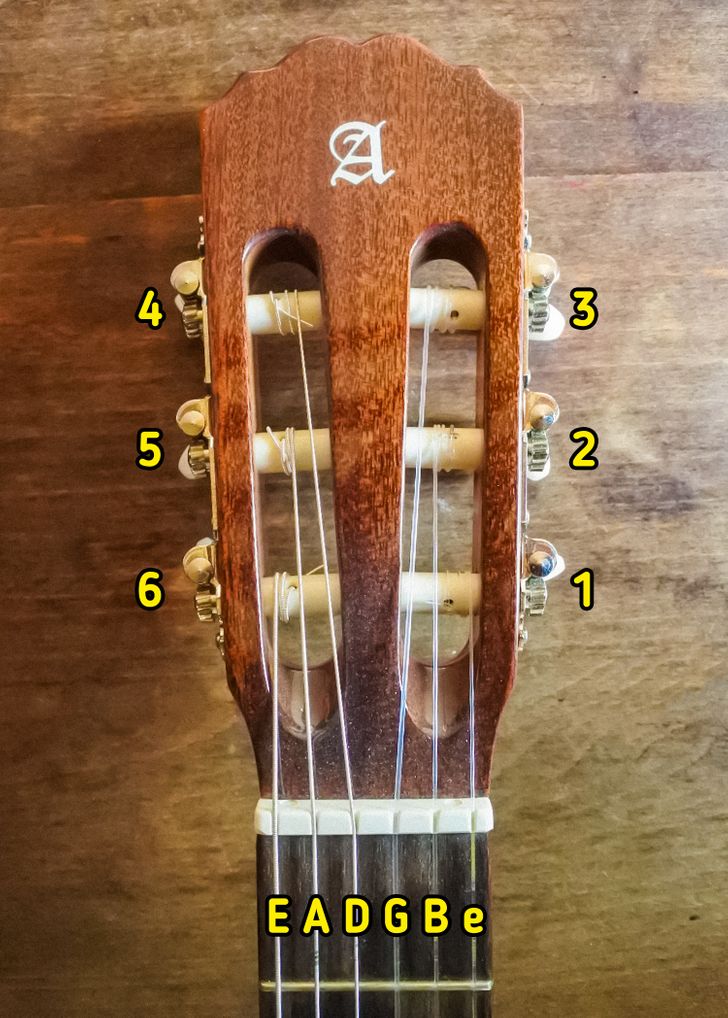
When playing the guitar, you’ll typically use a standard tuning, which is:
- E — A — D — G — B — e
Notes are usually enumerated from the thickest string to the thinnest one. Their order is reversed: the thickest string of your guitar is referred to as the sixth and the thinnest one as the first. Because the standard tuning has 2 E strings, some people use a capital letter to refer to the thickest one and a lowercase letter to refer to the thinnest one.
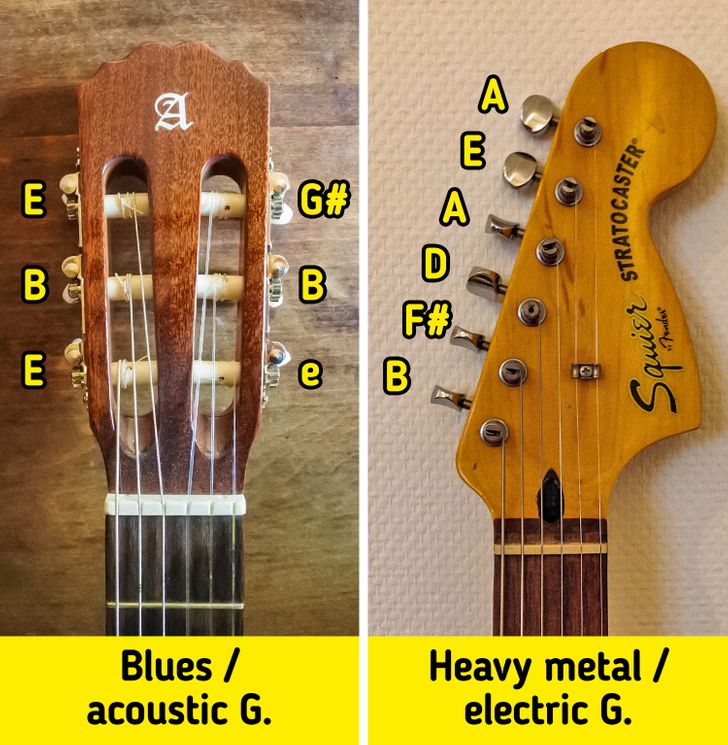
While this standard tuning is, by far, the most popular one, some songs or genres require you to use a different set of notes. That’s why, sometimes, alternative tunings are a better option. While you’ll typically use a specific tuning, it doesn’t mean that you can’t use it with other genres. Some of the most popular alternative tunings are:
- Drop D (metal and alternative rock)
D — A — D — G — B — e
- Open D (folk, blues, and rock)
D — A — D — F# - A — d
- Drop C (metal and hard rock)
C — G — C — F — A — D
- Open C (folk, rock, and indie alternative)
C — G — C — G — C — E
- Open G (blues, folk, and classic rock)
D — G — D — G — B — d
- Open E (blues, folk, and rock)
E — B — E — G# - B — e
- Drop A (hard rock and heavy metal)
A — E — A — D — F# - B
As you might have noticed, some of the lower tunings require you to loosen all 6 of your strings more than what your guitar is used to if you normally play it with the standard tuning. Sometimes, when strings are too loose, they can rattle against your fretboard. If you plan on using these tunings permanently, you might want to consider going to a luthier to set up your guitar or use heavier gauge strings.
B. General tips before starting
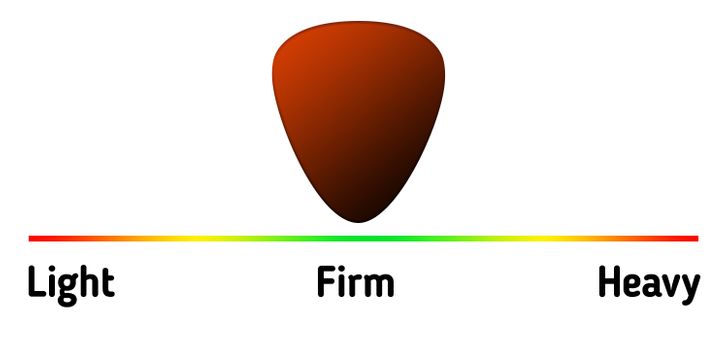
- If you’re a beginner, you might want to start by mastering the standard tuning and then move onto other alternative tunings like the ones we mentioned above.
- Always tune just one string at a time.
- Use a pick or your thumb to firmly pluck the string you want to tune. Don’t do it too hard or too soft.
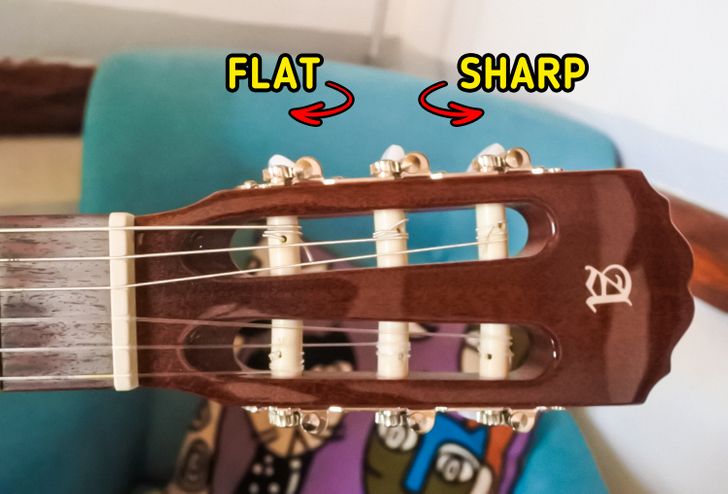
- When turned toward you, most tuning keys make the chord emit a flatter (lower) note.
- When turned away from you, most tuning keys make the chord emit a sharper (higher) note.
- The way you turn the tuning keys matters. If your chord is too sharp and you need a flatter note, it’s better to go a bit flatter than needed and to move to a sharper note or pitch from there.
- To reduce the risk of a string snapping when tuning up, slowly turn your first tuning key a quarter turn each time. Then, continue to pluck your string as you slowly turn your peg until your string hits the correct pitch. From there, move onto your next string and repeat the same procedure.
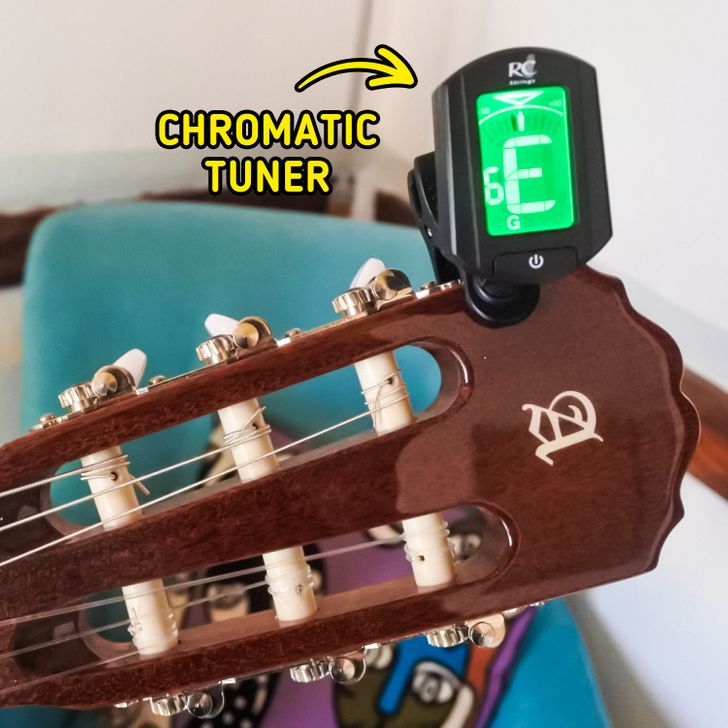
- For most beginners, using a chromatic tuner (either electronic or digital) is the simplest way to find the right pitch. These are also good options for people who are more visual (see section C).
- If you’ve developed an “ear” for musical notes and intervals after playing for a while, you might prefer using a pitch tuner or a pitch pipe to tune by ear (see section D). These accessories play the pitch for each string that you’ll later have to match by ear. You can also use another instrument as a reference, such as a piano, to tune by ear.
C. Tuning with an electronic or digital tuner
Step 1: Select the correct instrument.
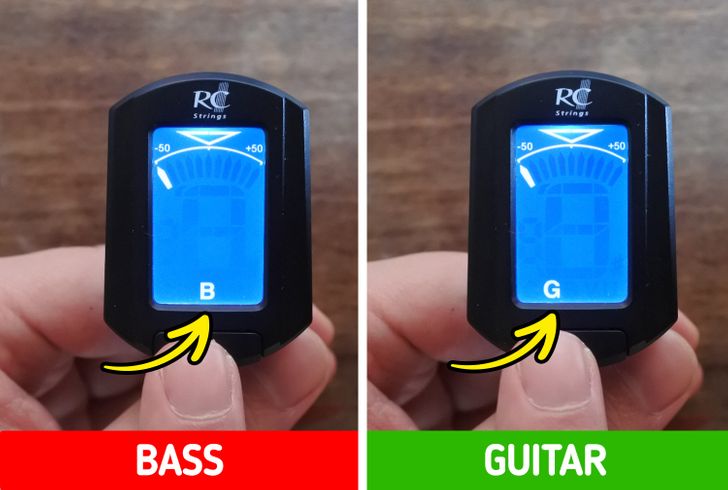
Electronic or digital tuners often give you the option to tune different string instruments, not just guitars. Make sure you select the right instrument, which, in this case, is an acoustic or electric guitar. Sometimes, you’ll also have the option to choose a particular tuning.
- If you’re using an electric guitar, sometimes you can plug in your guitar to electronic/digital tuners or vice versa.
Step 2: Pluck the string and tune.
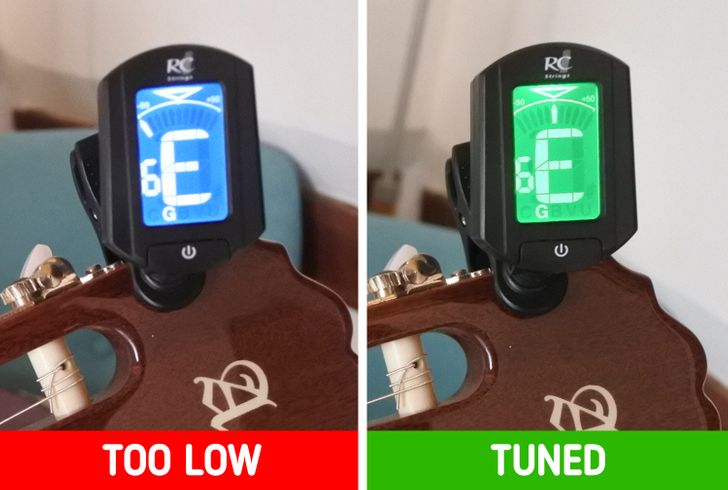
Start by tuning the sixth chord (a low E, the thickest string). A chromatic tuner, whether it’s digital or electronic, “hears” the note you’re playing and displays the pitch you’re at. It’ll also indicate when you’ve reached the pitch you’re looking for. Pluck the string and turn the tuning keys as needed to reach the right pitch. Once the thickest string is tuned, move onto the next one (the fifth string, an A) and repeat the same procedure. Move in descending order until all the strings are tuned.
D. Tuning by ear (only for standard tuning)
Step 1: Tune the low E string.
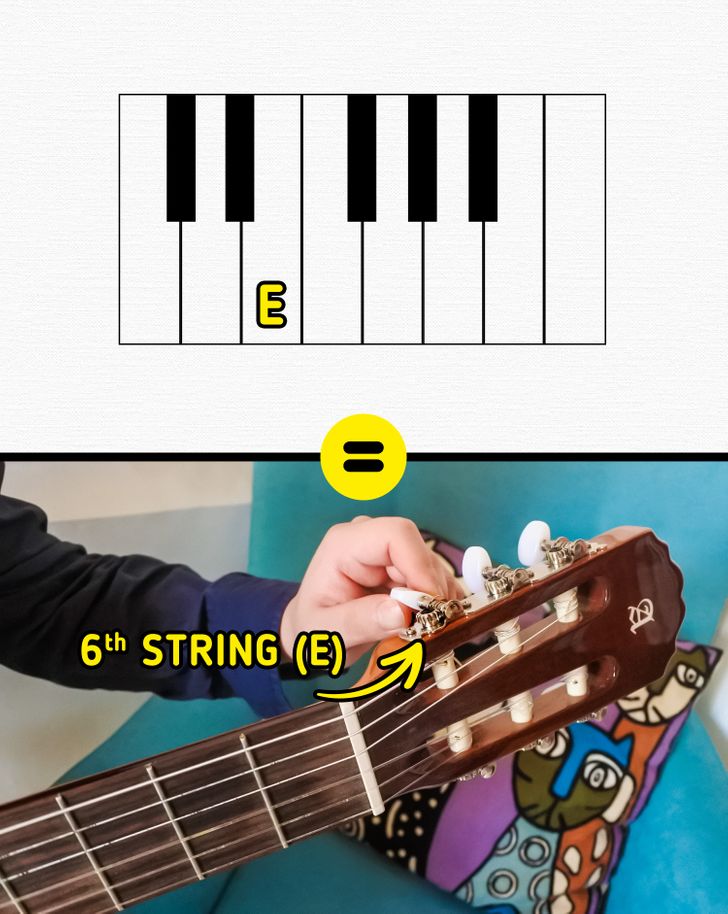
Start by tuning the sixth string (a low E, the thickest string). If you don’t know by heart how a low E should sound, you can use a piano or a pitch pipe as a reference to compare the pitch of your string and the actual E note. On the piano, the E you’re looking for is 2 octaves below middle C.
Turn the tuning key of the sixth chord while stroking the string until you match the same E that you’re playing on the piano or pitch pipe.
Step 2: Tune the A string.
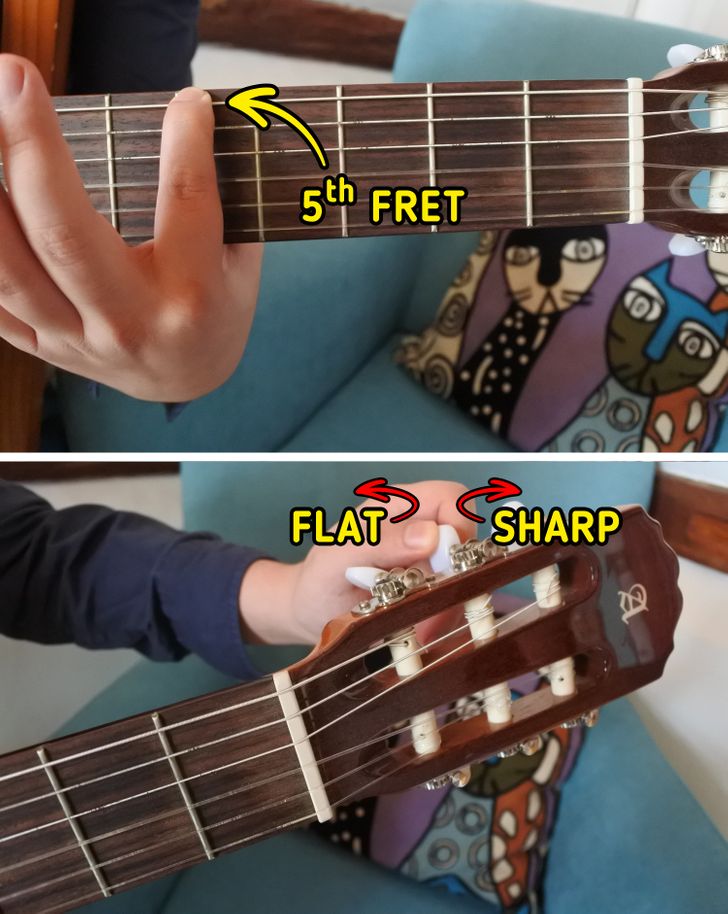
Press the fifth fret on the sixth string (the low E you just tuned) and play the note: that’s an A. You’ll use it as a reference to match the pitch of your fifth string (A) with that note. Play the sixth string and then the fifth string. Turn the tuning key of the fifth string and play both strings again. Compare and adjust until both notes sound exactly the same.
- If you feel more comfortable using a pitch pipe as a reference instead of the sixth string of your guitar, you can also do that.
Step 3: Repeat the process with the other strings.
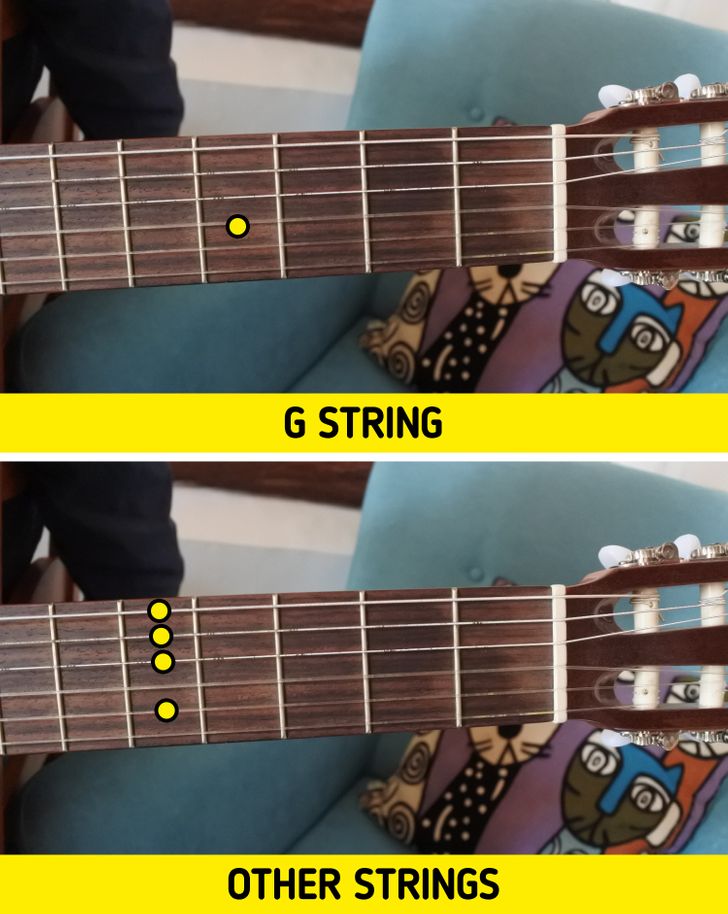
Repeat the same process as in step 2 but with the rest of the strings. You’ll have to press the fifth fret on all the strings above the one you’re trying to tune, except for the G string, where you’ll have to press the fourth fret to obtain the B note that you’ll use as a reference to tune the second string.
- Just like in the previous step, if you prefer using a piano or a pitch pipe as a reference for all the strings instead of your own guitar, you can also do that.